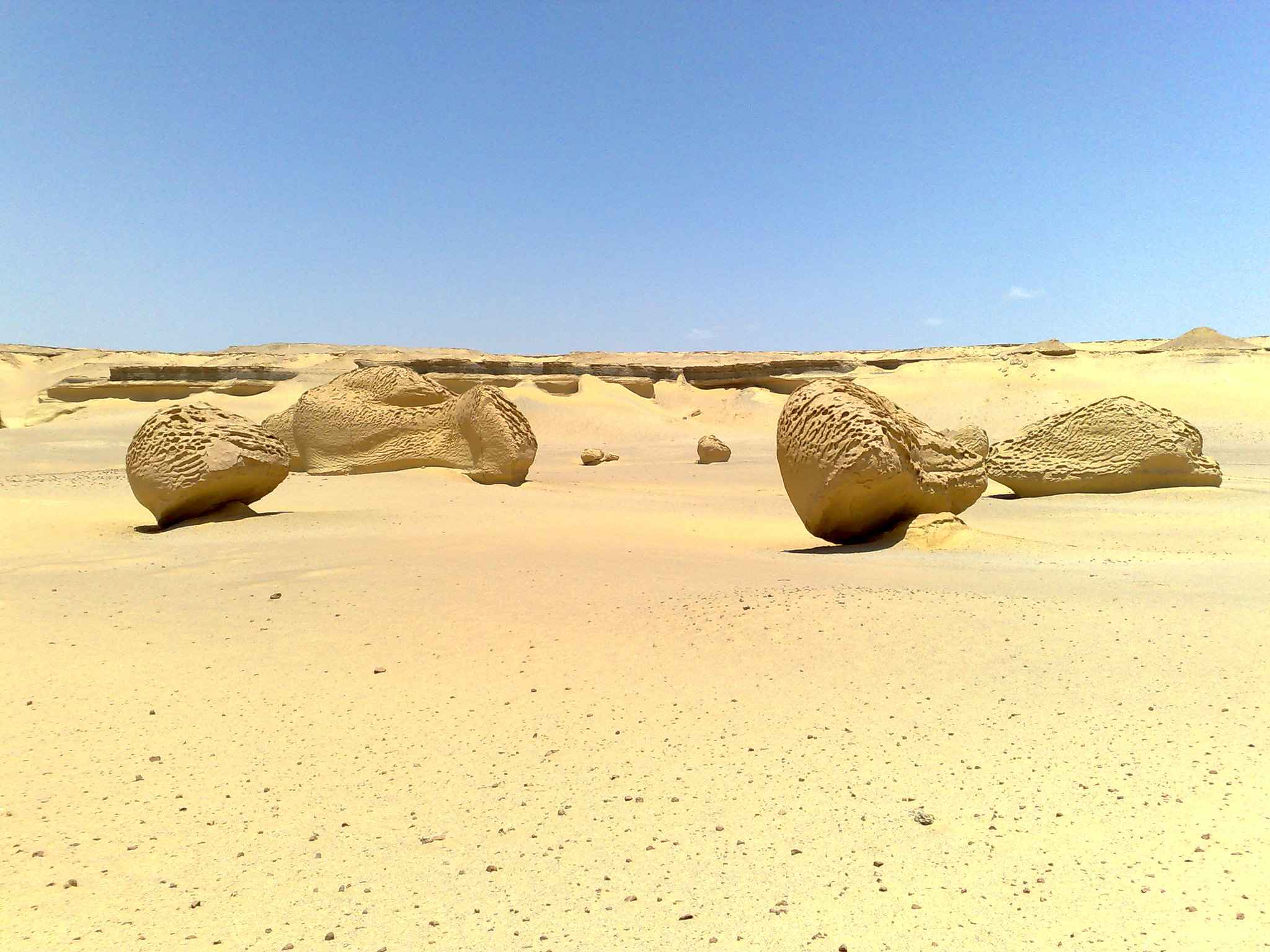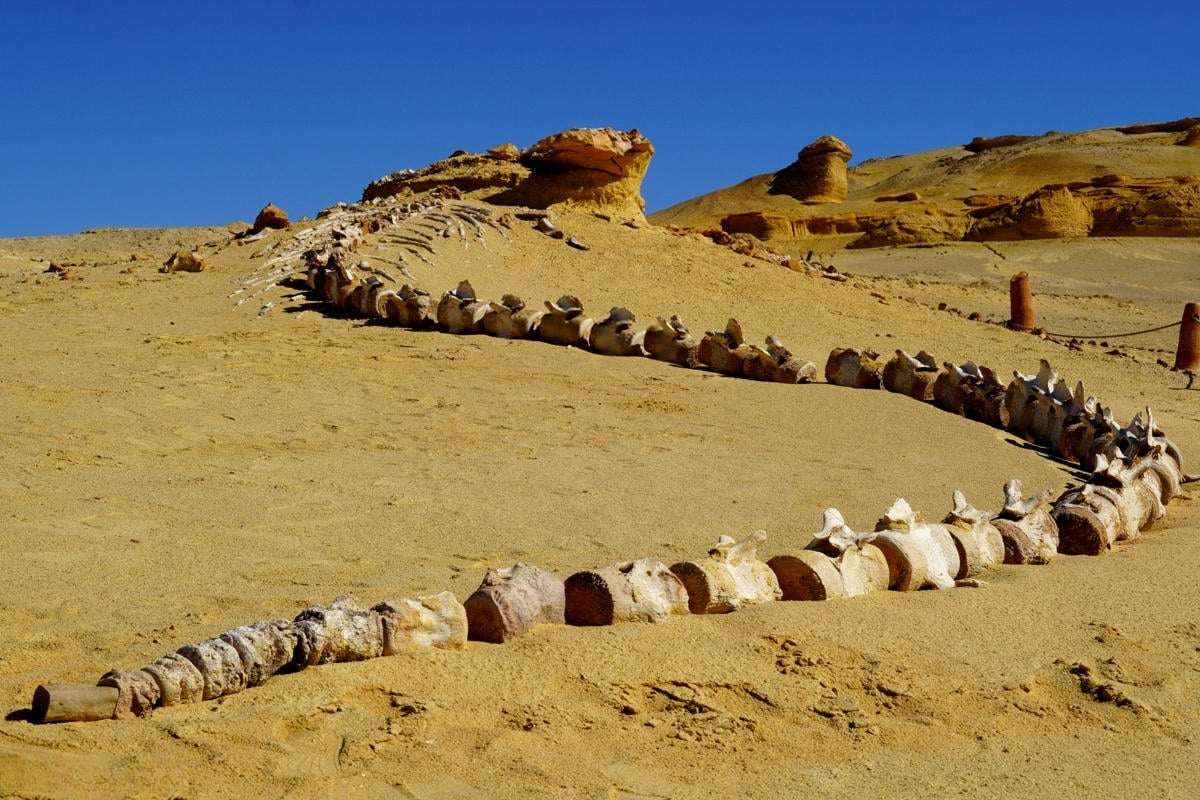Hidden deep in the Western Desert, Valley of the Whales Egypt—also known as Wadi Al Hitan—is one of the most fascinating paleontological sites in the world. This UNESCO World Heritage site offers an extraordinary glimpse into the past, showcasing the whale skeleton in desert that tells the story of how ancient whales transitioned from land to sea.
For those fascinated by history, evolution, and natural wonders, a journey to Whale Valley Egypt is a must.
The Discovery of Whale Valley Egypt

Wadi Al Hitan Egypt, or the Valley of the Whales, is a surreal landscape that was once covered by the sea over 40 million years ago. Fossils found here provide crucial evidence of the walking whales of Egypt, a species that still had limbs, illustrating their transformation from land-dwelling creatures into fully aquatic mammals.
The first discoveries in Wadi El Hitan Egypt were made in the early 20th century, but it wasn’t until later that scientists realized its importance. The site contains well-preserved skeletons of the ancient desert whales, some stretching up to 60 feet long.
A Journey Through Time in Wadi El Hitan

Walking through Wadi Hitan Whale Valley Egypt, visitors witness a stunning open-air museum where fossilized remains of primitive whales lie embedded in the sand. Some of these ancient marine giants still possess vestigial hind legs, proving their evolutionary link to land mammals.
Key Highlights of Wadi Al-Hitan Egypt
- Fossilized Whale Skeletons – These fossils, preserved for millions of years, provide some of the most compelling evidence for the theory of evolution.
- Fossilized Mangroves and Marine Life – In addition to whales, the site contains fossils of ancient sea creatures, including sharks and rays.
- A Stunning Desert Landscape – The golden dunes and wind-sculpted rock formations make Wadi of Egypt a mesmerizing place to explore.
Why Wadi Al Hitan Is Unique
Unlike many fossil sites, the Valley of Whales in Egypt is unique because the skeletons are scattered across an open desert, allowing visitors to see them in their natural resting place. This makes it one of the most significant places for studying whale skeleton desert fossils.
What Makes This Site Special?
✔ Incredible Preservation – Fossils are nearly intact, providing scientists with detailed insights into ancient whale anatomy.
✔ Firsthand Look at Evolution – This is one of the few places on Earth where you can physically see evolution in action.
✔ Remote and Undisturbed – Unlike more commercialized sites, Wadi Egypt remains a quiet, untouched destination.
Are There Whales in the Red Sea?
Visitors often wonder, are there whales in the Red Sea today? The answer is yes! Though ancient species no longer roam, modern-day whales, such as Bryde’s whales and humpbacks, are occasionally spotted in the Whales in the Red Sea region. However, none are as iconic as the prehistoric walking whales of Egypt found in Whale Valley.
Exploring Wadi Al-Hitan: What to Expect
A visit to Wadi Al Hitan offers a mix of adventure, history, and stunning desert landscapes.
What to Do in Wadi Al Hitan
- Walk Among the Fossils – Follow marked trails leading to some of the best-preserved specimens of prehistoric whales.
- Visit the Fossil & Climate Change Museum – Learn more about how climate shifts transformed the area from an ocean to a desert.
- Take a Jeep Safari – The remote location of Wadi Al-Hitan Egypt makes it perfect for an off-road adventure through the sand dunes.
The site is part of the larger Wadi of Egypt ecosystem and lies within the Fayoum Depression, known for its other archaeological and natural wonders.
How to Get to Valley of the Whales Egypt
The Valley of the Whales Map shows that the site is located about 150 kilometers southwest of Cairo. Most travelers reach it via a guided tour from Cairo or Fayoum. Given its remote location, hiring a 4×4 vehicle is the best way to explore.
Best Time to Visit
The best time to visit Whale Valley Egypt is during the cooler months from October to April, as summer temperatures can be extreme.
Final Thoughts: A Window Into Earth’s Past
Visiting Wadi El Hitan Egypt is like stepping back in time. From the breathtaking whale skeleton desert remains to the stunning landscapes, this site offers an unparalleled look at Earth’s evolutionary history. Whether you’re an adventure seeker, a history enthusiast, or a nature lover, the Valley of the Whales is a place that leaves a lasting impression.
For anyone interested in the origins of marine life, Wadi Al Hitan Egypt is an experience not to be missed!




